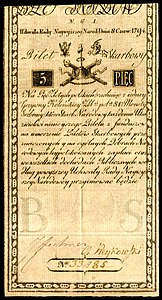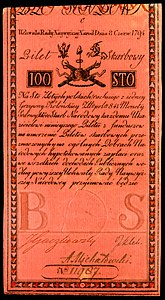Wikipedia:Picture of the day/September 2022
|
Featured picture tools: |
These featured pictures, as scheduled below, appeared as the picture of the day (POTD) on the English Wikipedia's Main Page in September 2022. Individual sections for each day on this page can be linked to with the day number as the anchor name (e.g. [[Wikipedia:Picture of the day/September 2022#1]] for September 1).
You can add an automatically updating POTD template to your user page using {{Pic of the day}} (version with blurb) or {{POTD}} (version without blurb). For instructions on how to make custom POTD layouts, see Wikipedia:Picture of the day.Purge server cache
September 1
|
A Trip to the Moon (Le Voyage dans la Lune) is a French adventure short film directed by Georges Méliès and released on 1 September 1902. Inspired by a wide variety of sources, including Jules Verne's 1865 novel From the Earth to the Moon and its 1870 sequel Around the Moon, the silent film follows a group of astronomers who travel to the Moon in a cannon-propelled capsule, explore the Moon's surface, escape from an underground group of Selenites (lunar inhabitants), and return to Earth with a captive Selenite. Its ensemble cast of French theatrical performers is led by Méliès himself as the main character, Professor Barbenfouillis. The film features the overtly theatrical style for which Méliès became famous. In an iconic shot, the astronomers' capsule hits the Man in the Moon in the eye, a visual pun on the expression dans l'œil (literally 'in the eye'), the French equivalent of the English 'bullseye'. Film credit: Georges Méliès
Recently featured:
|
September 2

|
The surrender of Japan, announced by the Japanese emperor Hirohito on August 15, 1945, brought the hostilities of World War II in Asia to a close. In this photograph, taken by a soldier of the United States Army Signal Corps, Mamoru Shigemitsu, Minister for Foreign Affairs, signs the Japanese Instrument of Surrender on behalf of the Japanese government aboard USS Missouri in Tokyo Bay on September 2, 1945, formally ending the war. U.S. Army general Richard K. Sutherland watches on the left of the photograph, and Shigemitsu is assisted by Toshikazu Kase, an official of the Japanese Foreign Ministry, on the right. Photograph credit: Stephen E. Korpanty; restored by Adam Cuerden
Recently featured:
|
September 3

|
The snowy-bellied hummingbird (Saucerottia edward) is a species of hummingbird found in Costa Rica, Panama, and far north-western Colombia. Formerly placed in the genus Amazilia, the species was reassigned to Saucerottia as part of the revised classification to create monophyletic genera after a study published in 2014 found that Amazilia was polyphyletic. It measures approximately 10 centimetres (3.9 in) in length, with a metallic-green head and upper chest, pure-white lower chest and belly, and metallic-copper back and rump. This snowy-bellied hummingbird, of the subspecies S. e. niveoventer, was photographed in the Mount Totumas cloud forest in Panama. Photograph credit: Charles J. Sharp
Recently featured:
|
September 4

|
Washington, D.C., is the capital city of the United States and the country's only federal district. It is located on the east bank of the Potomac River, which forms its southwestern and southern border with the state of Virginia, and it shares a land border with Maryland on its remaining sides. The city was named for George Washington, the first president of the United States, and the federal district is named after Columbia, a female personification of the nation. This illustration, created by Henry Mitchell for State Arms of the Union, published by Louis Prang in 1876, depicts the District of Columbia's historical coat of arms, featuring Columbia holding the Constitution of the United States and a Phrygian cap, with the motto Justitia omnibus ('Justice for all') below the shield. Illustration credit: Henry Mitchell; restored by Andrew Shiva
Recently featured:
|
September 5

|
The Trundholm sun chariot is a Nordic Bronze Age artifact discovered in Denmark. It is a representation of the sun chariot, consisting of a bronze statue of a horse and a large bronze disk, which are placed on a device with spoked wheels. The sculpture was discovered with no accompanying objects in 1902 in a peat bog on the moor of Trundholm, on the peninsula of Odsherred in the northwestern part of Zealand. The artifact is now in the collection of the National Museum of Denmark in Copenhagen. Sculpture credit: unknown; photographed by the National Museum of Denmark
Recently featured:
|
September 6

|
|
The scintillant hummingbird (Selasphorus scintilla) is a species of hummingbird that is endemic to Costa Rica and Panama. It inhabits brushy forest edges, coffee plantations and sometimes gardens at elevations from 900 to 2,000 metres (3,000 to 6,600 ft), and up to 2,500 metres (8,200 ft) when not breeding. It is only 6.5 to 8 centimetres (2.6 to 3.1 in) long, including the bill, making it one of the smallest birds in existence, marginally larger than the bee hummingbird. This female scintillant hummingbird was photographed feeding on an Abutilon flower in the Mount Totumas cloud forest in Panama. Photograph credit: Charles J. Sharp
Recently featured:
|
September 7

|
The red-and-green macaw (Ara chloropterus) is a species of macaw, the largest in the genus Ara. Also known as the green-winged macaw, it is widespread in the forests and woodlands of northern and central South America. This juvenile was photographed perching on a tree near the banks of the Rio Negro in the Pantanal, in southwestern Brazil. Photograph credit: Charles J. Sharp
Recently featured:
|
September 8

|
Daniele Hypólito (born September 8, 1984) is a Brazilian gymnast who competed in the 2000, 2004, 2008, 2012, and 2016 Summer Olympics. This photograph depicts Hypólito performing on the balance beam in the final of the women's artistic team all-around event at the 2016 Olympics in Rio de Janeiro, in which Brazil finished in eighth place. Photograph credit: Fernando Frazão
Recently featured:
|
September 9

|
Theloderma corticale is a species of frog in the family Rhacophoridae. It is found in northern Vietnam and China, and possibly also in Laos. Its common name, the mossy frog, arises from the fact that its skin is a mottled green and brown that resembles moss growing on rock, forming an effective camouflage. It has large sticky pads on its toes and a soft underbelly, with a snout–vent length of 61 millimetres (2.4 in). The females grow larger than the males and can reach sizes of 8 to 9 centimetres (3.1 to 3.5 in). When frightened, it will curl into a ball and play dead. This T. corticale frog was photographed at Karlsruhe Zoo in Germany. Photograph credit: H. Zell
Recently featured:
|
September 10
|
A demonstration of the effect of a multiplane camera, a motion-picture camera that was used in the traditional animation process that moves a number of pieces of artwork past the camera at various speeds and at various distances from one another. This creates a sense of parallax or depth. Various parts of the artwork layers are left transparent to allow other layers to be seen behind them. The movements are calculated and photographed frame by frame, with the result being an illusion of depth by having several layers of artwork moving at different speeds: the further away from the camera, the slower the speed. The multiplane effect is sometimes referred to as a parallax process. Video credit: Janke
Recently featured:
|
September 11

|
|
One World Trade Center, seen here amongst the skyline of Lower Manhattan, is the main building of the rebuilt World Trade Center complex in New York City. It is the tallest building in the United States, the tallest in the Western Hemisphere, and the seventh-tallest in the world. The supertall structure has the same name as the North Tower of the original World Trade Center, which was destroyed in the terrorist attacks of September 11, 2001. Photograph credit: King of Hearts
Recently featured:
|
September 12
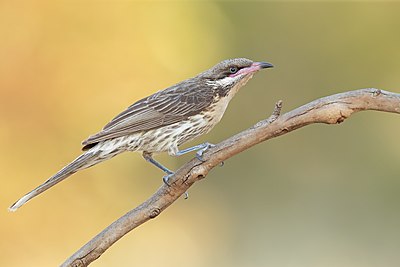
|
The spiny-cheeked honeyeater (Acanthagenys rufogularis) is a species of bird in the family Meliphagidae, the honeyeaters, and the only species in the monotypic genus Acanthagenys. It is large for a honeyeater, ranging from 22 to 27 centimetres (8.7 to 10.6 in) in length and weighing around 52 grams (1.8 oz). A common species throughout most of Australia, the birds are sociable and aggressive, and often observed foraging in large flocks. This spiny-cheeked honeyeater was photographed near Patchewollock in the Australian state of Victoria. Photograph credit: John Harrison
Recently featured:
|
September 13
The Polish złoty is the official currency of Poland. While originally existing only as coinage, radical changes to the currency were made during the Kościuszko Uprising in 1794. The second partition of the vast Polish–Lithuanian Commonwealth resulted in the loss of approximately 200,000 square kilometres (77,000 sq mi) of land and precipitated an economic collapse. The widespread shortage of funds to finance the defense of remaining territories forced the insurrectionist government to look for alternatives. In June 1794, the Polish military leader Tadeusz Kościuszko began printing paper money as a substitute for coinage, which could not be minted in required quantities. The first Polish banknotes were issued on 8 July 1794. The banknotes depicted here, in five denominations from five to one hundred złotych, are from the first issue in 1794 and today form part of the National Numismatic Collection at the Smithsonian Institution. Banknote design credit: Kingdom of Poland; photographed by Andrew Shiva
Recently featured:
|
September 14

|
Ophrys insectifera, the fly orchid, is a species of orchid and the type species of the genus Ophrys. It is remarkable as an example of the use of sexually deceptive pollination and floral mimicry, as well as a highly selective and highly evolved plant–pollinator relationship. The plants use scent that mimics female sexual pheromones to attract male wasps, which pollinate the flowers while attempting to mate with them. It is classified as a least-concern species by the International Union for Conservation of Nature, but considered to be vulnerable in Great Britain. This o. insectifera orchid was photographed in Niitvälja, Estonia. Photograph credit: Ivar Leidus
Recently featured:
|
September 15

|
|
The northern gannet (Morus bassanus) is a seabird, the largest species of the gannet family, Sulidae. It is native to the coasts of the Atlantic Ocean, breeding in Western Europe and northeastern North America. Nesting takes place in colonies on both sides of the North Atlantic, the largest of which are at Bass Rock, St. Kilda, and Ailsa Craig in Scotland; Grassholm in Wales; and Bonaventure Island off the coast of Quebec. Colonies are mostly located on offshore islands with cliffs, from which the birds can more easily launch into the air. The northern gannet undertakes seasonal migrations and catches fish (which are the mainstay of its diet) by making high-speed dives into the sea. The northern gannet was previously hunted for food in certain parts of its range, and although that practice still continues in the Outer Hebrides of Scotland and the Faroe Islands, the bird faces few other natural or man-made threats. Photograph credit: Hobbyfotowiki
Recently featured:
|
September 16

|
The Codex Mendoza is an Aztec codex believed to have been created around the year 1541. It contains a history of both the Aztec rulers and their conquests as well as a description of the daily life of pre-conquest Aztec society. The codex is written in the Nahuatl language utilizing traditional Aztec pictograms with a translation and explanation of the text provided in Spanish. It is named after Don Antonio de Mendoza, the viceroy of New Spain, and a leading patron of native artists. This page depicts the founding of the Aztec capital Tenochtitlan, located on the site of the modern Mexico City. It is in the collection of the Bodleian Libraries in Oxford. Manuscript credit: unknown
Recently featured:
|
September 17
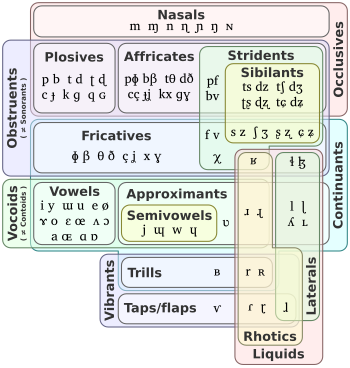
|
In linguistics, a distinctive feature is the most basic unit of phonological structure that distinguishes one speech sound from another within a language. They are grouped into categories according to the natural classes of segments they describe: major class features, laryngeal features, manner features, and place features. These feature categories are in turn further specified on the basis of the phonetic properties of the segments in question. This Euler diagram illustrates a typical classification of speech sounds, represented in the International Phonetic Alphabet, with the relationship between manners of articulation and related categories, including distinctive features. Diagram credit: Nardog
Recently featured:
|
September 18

|
Trimeresurus popeiorum is a species of venomous pit viper in the family Viperidae. The species is native to northern and northeastern parts of India, Southeast Asia, and parts of Indonesia. Common names include Pope's pit viper, Pope's tree viper, and Pope's bamboo pitviper. Trimeresurus popeiorum preys upon frogs, lizards, birds, and rodents (especially rats and squirrels). Photograph credit: Rushenb
Recently featured:
|
September 19

|
|
Women took on many different roles during World War II, including as combatants or workers on the home front. In the United Kingdom, as before in World War I, previously forbidden job opportunities opened up for women, including in factories to create weapons that were used on the battlefield. The roles of women shifting from domestic to masculine and dangerous jobs in the workforce made for important changes in workplace structure and society. This April 1945 photograph depicts Princess Elizabeth (later Queen Elizabeth II) standing beside an ambulance in the uniform of a second subaltern in the Auxiliary Territorial Service, the women's branch of the British Army during the war. Appointed to the honorary position in February 1945, she trained and worked as a driver and mechanic, and was given the rank of honorary junior commander five months later. Photograph credit: Ministry of Information; restored by Angerey
Recently featured:
|
September 20

|
Lunch atop a Skyscraper is a black-and-white photograph taken on September 20, 1932, of eleven ironworkers sitting on a steel beam 850 feet (260 m) above the ground on the sixty-ninth floor of the RCA Building (30 Rockefeller Plaza), then nearing completion, at Rockefeller Center in Manhattan, New York City. It was arranged as a publicity stunt, part of a campaign promoting the skyscraper. The photograph was first published in October 1932, during the construction of Rockefeller Center. Photograph credit: unknown, possibly Charles Clyde Ebbets
Recently featured:
|
September 21
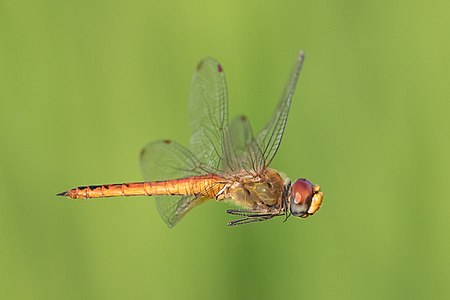
|
|
Pantala flavescens, also known as the globe skimmer, globe wanderer or wandering glider, is a wide-ranging dragonfly of the family Libellulidae. It is considered to be the most widespread dragonfly with a good population on every continent except Antarctica, although it is rare in Europe. Globe skimmers make an annual multigenerational journey of some 18,000 km (about 11,200 miles); to complete the migration, individual globe skimmers fly more than 6,000 km (3,730 miles)—one of the farthest known migrations of all insect species. Photograph credit: Basile Morin
Recently featured:
|
September 22
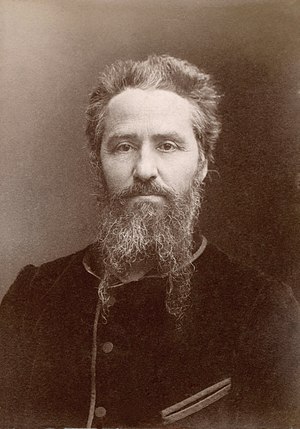
|
Onésime Reclus (22 September 1837 – 30 June 1916), was a French geographer who specialized in the relations between France and its colonies. In 1880 he coined the term Francophonie (the community of French speakers) as a means of classification of peoples of the world, determined by the language they spoke. While this term did not appear in dictionaries until 1930, it has become more important since the late 20th century as part of the conceptual rethinking of cultures and geography. This photograph of Reclus was taken by the French photographer Nadar in 1889. Photograph credit: Nadar; restored by Jebulon
Recently featured:
|
September 23

|
|
Lichfield Cathedral, in Lichfield, Staffordshire, is the only medieval English cathedral with three spires. The cathedral suffered severe damage during the English Civil War, during which all of the stained glass was destroyed. In spite of this, the windows of the Lady Chapel contain some of the finest medieval Flemish painted glass in existence. Dating from the 1530s, it came from Herkenrode Abbey in Belgium in 1801, having been purchased by Sir Brooke Boothby when that abbey was dissolved during the Napoleonic Wars. It was sold on to the cathedral for the same price. There are also some fine windows by Betton and Evans (1819), and many fine late-19th-century windows, particularly those by Charles Eamer Kempe. This photograph of the cathedral's interior depicts the choir, facing east. Photograph credit: David Iliff
Recently featured:
|
September 24
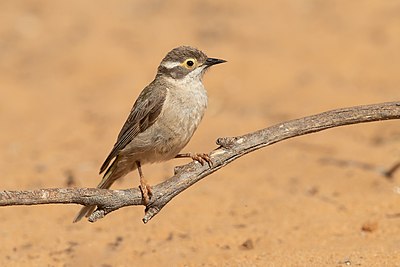
|
The brown-headed honeyeater (Melithreptus brevirostris) is a species of passerine bird in the family Meliphagidae, the honeyeaters. Endemic to Australia, its natural habitats are temperate forests and Mediterranean-type shrubby vegetation. Insects form the bulk of its diet, and like its close relatives, the black-chinned and strong-billed honeyeaters, it forages by probing in the bark of tree trunks and branches. This brown-headed honeyeater was photographed perching on a branch in Patchewollock, Victoria. Photograph credit: John Harrison
Recently featured:
|
September 25

|
James Stewart (1908–1997) was an American actor and military pilot. Known for his distinctive drawl and everyman screen persona, Stewart's film career spanned eighty films from 1935 to 1991. With the strong morality he portrayed both on and off screen, he epitomized the "American ideal" in the mid–20th century. This publicity photograph of Stewart was taken for the 1948 film Call Northside 777. Photograph credit: 20th Century Fox; cropped by Lemonreader
Recently featured:
|
September 26

|
Nemateleotris magnifica, known by common names including the fire goby, the magnificent fire fish, the fire dartfish, or the red fire goby, is a species of dartfish native to the Indian and Pacific Oceans, from the eastern coast of Africa to the Hawaiian Islands and from the Austral Islands north to the Ryukyu Islands. It inhabits coral reefs, where it can be found at depths of 6 to 70 metres (20 to 230 ft). It is usually found just above the bottom, facing into the current, where it awaits its prey of small invertebrates. This N. magnifica fish was photographed near the island of Morotai in the Indonesian Maluku Islands. Photograph credit: Rickard Zerpe
Recently featured:
|
September 27

|
|
The double-crested cormorant (Nannopterum auritum) is a member of the cormorant family of water birds. Its habitat is near rivers and lakes as well as in coastal areas, and is widely distributed across North America, from the Aleutian Islands in Alaska down to Florida and Mexico. Measuring 70 to 90 cm (28 to 35 in) in length, it is an all-black bird which gains a small double crest of black and white feathers in breeding season. It has a bare patch of orange-yellow facial skin. Five subspecies are recognized. It mainly eats fish and hunts by swimming and diving. Its feathers, like those of all cormorants, are not waterproof and it must spend time drying them out after spending time in the water. Once threatened by the use of DDT, its numbers have increased markedly in recent years. This juvenile double-crested cormorant, of the subspecies N. a. albociliatum (the Farallon cormorant), was photographed at the Sutro Baths in San Francisco, California. Photograph credit: Frank Schulenburg
Recently featured:
|
September 28
National Bank Notes were United States banknotes issued by national banks chartered by the U.S. federal government. The banknotes were usually backed by bonds deposited by the bank with the United States Treasury. In addition, banks were required to maintain a redemption fund amounting to five percent of any outstanding note balance, in gold or "lawful money". The banknotes were not legal tender in general, but were satisfactory for nearly all payments to and by the federal government. They were retired as a currency type by the federal government in the 1930s, when United States currency was consolidated into Federal Reserve Notes, United States Notes, and silver certificates. These nine banknotes, in denominations from $1 to $1000, were issued by various banks across the country as part of either the original or the 1875 series of National Bank Notes. Banknote design credit: Office of the Comptroller of the Currency and the Bureau of Engraving and Printing; scanned by Andrew Shiva
Recently featured:
|
September 29

|
Jewess with Oranges is an oil-on-canvas painting by the Polish artist Aleksander Gierymski, completed in 1881 and purchased in 1928 by the National Museum in Warsaw. During the World War II looting of Poland, the painting was stolen by German forces, and the Polish authorities sought its whereabouts and its return after the war. On 26 November 2010, the painting appeared in an antique market in Buxtehude, Germany. The Polish Ministry of Culture and National Heritage began negotiations to bring the painting back to Poland. The talks were successful, and on 15 July 2011 the painting was returned to the National Museum, with compensation paid by the PZU Foundation to the German owner. Painting credit: Aleksander Gierymski
Recently featured:
|
September 30

|
|
Ignace-Gaston Pardies (1636–1673) was a French Catholic priest and scientist. His celestial atlas, entitled Globi coelestis in tabulas planas redacti descriptio, comprised six charts of the night sky and was first published in 1674. The atlas uses a gnomonic projection so that the plates make up a cube of the celestial sphere. The constellation figures are drawn from Uranometria, but were carefully reworked and adapted to a broader view of the sky. This is the sixth plate from a 1693 edition of Pardies's atlas, featuring constellations from the southern sky including Pavo, Indus and Apus. An index of constellations is provided in the left and right margins, in Latin and French, respectively. Map credit: Ignace-Gaston Pardies
Recently featured:
|
Picture of the day archives and future dates

